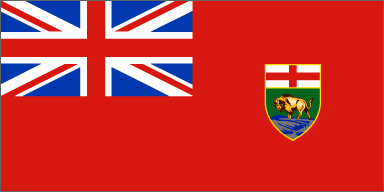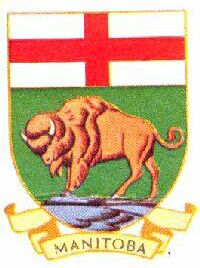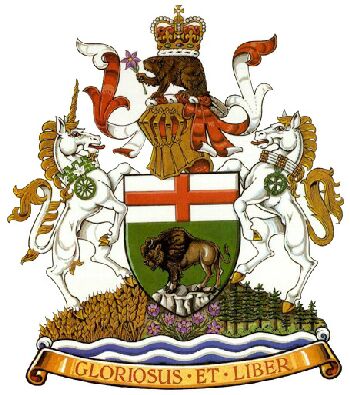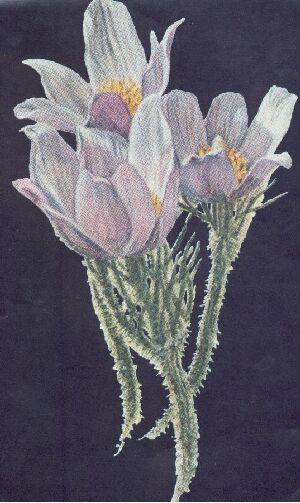|
- Manitoba became a province in 1870.
- The name Manitoba first referred to Lake Manitoba.
- In the Assiniboine language, it is Mini tobow
meaning
"Lake of the Prairie".
- In Cree, it is Manitou bou for "the narrows of the Great Spirit".

- Manitoba's flag looks a lot like Canada's former flag,
the Canadian Red Ensign
- The Union Jack is in the upper left corner on a red background.
- The province's shield is on the right side of the flag.
- It became the official flag of Manitoba in 1966.

- At the top of the shield is the English cross of St. George.
- The lower part has a bison on green background.
(Thousands of bison roamed the prairies
before settlers arrived.)

- The shield is at the centre of the coat of arms.
- Above it is a gold helmet and a beaver holding a crocus
(the provincial flower).
- At the very top is a crown.
- A unicorn and a white horse are on either side.
- The unicorn represents the early Scottish settlers.
- The horse was very important to the First Peoples, the Métis and European settlers.
- The unicorn's collar has a wheel from a Red River cart.
- The Aboriginal circle of life is on the horse's collar.
- The bottom is grain fields, water, provincial flower and tree.
- The motto Gloriosus et liber means "Glorious and Free".

THE PRAIRIE CROCUS
- The crocus is often the first flower
appearing in early spring.
- School children chose it
for the floral emblem in 1906.
- The flower is various shades of purple,
from a bluish-purple to a pale purple.
- The crocus has a furry covering to protect it from the cold.
Click on the small photo to see
a larger picture of the crocus.

OTHER EMBLEMS
- bird - Great Grey Owl
(lives year-round in
Manitoba forests
; largest owl in North America)
- animal - bison
- tree - White Spruce
|
NEXT (Newfoundland & Labrador)

EMBLEMS |
CANADA

Web Pages for Students
J.Giannetta 1999
(updated 2017)
jgiannet@hotmail.com
source - Canadian Heritage
|



